Nintendo Handhelds (New Nintendo 3/2DS/XL)
 It is easy to argue that the Nintendo Gameboy revolutionized the portable gaming market, and may even have created the market. Since that time, Nintendo has found the Gameboy system to be a reliable source of income, updating the system and churning out games at a regular pace. For the past six years, the system of choice has been the Nintendo 3DS line. (Note that the “Gameboy” moniker is no longer present.) However, calling it the 3DS line of hardware does not do the variability of options justice. In celebration of the newest release, the Nintendo 2DS XL, I thought it might be fun to take a look back at the history of the handheld and possibly offer some advice..
It is easy to argue that the Nintendo Gameboy revolutionized the portable gaming market, and may even have created the market. Since that time, Nintendo has found the Gameboy system to be a reliable source of income, updating the system and churning out games at a regular pace. For the past six years, the system of choice has been the Nintendo 3DS line. (Note that the “Gameboy” moniker is no longer present.) However, calling it the 3DS line of hardware does not do the variability of options justice. In celebration of the newest release, the Nintendo 2DS XL, I thought it might be fun to take a look back at the history of the handheld and possibly offer some advice..
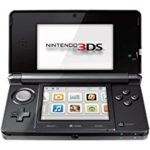 First, in 2011, there was the Nintendo 3DS. It was the next generation of hardware after the DS line (DS stands for dual screen) of handhelds. As with the DS line, the 3DS hardware was backwards compatible with previous hardware. The old Nintendo DS (and DSi – a bit more network savvy version) could play previous Nintendo Gameboy Advance games. The new 3DS could still play DS games (but not Gameboy Advance games.) Coming in at a hefty price of $250, the 3DS was not initially embraced. However, six months after release the handheld was dropped to $170 and sales quickly skyrocketed. As with the DS, the 3DS has two screens, one on each side of a hinged “clamshell” form factor. The bottom screen is touch sensitive and the top screen was able to create stereoscopic 3D effects without needing any special glasses. This effect could be adjusted via a slider which could increase the 3D effect or even turn it off altogether. In a fun-fact sort of feature, the handheld even had two rear-facing cameras which allowed one to take actual stereoscopic 3D photos (which could then be displayed on the 3DS screen.)
First, in 2011, there was the Nintendo 3DS. It was the next generation of hardware after the DS line (DS stands for dual screen) of handhelds. As with the DS line, the 3DS hardware was backwards compatible with previous hardware. The old Nintendo DS (and DSi – a bit more network savvy version) could play previous Nintendo Gameboy Advance games. The new 3DS could still play DS games (but not Gameboy Advance games.) Coming in at a hefty price of $250, the 3DS was not initially embraced. However, six months after release the handheld was dropped to $170 and sales quickly skyrocketed. As with the DS, the 3DS has two screens, one on each side of a hinged “clamshell” form factor. The bottom screen is touch sensitive and the top screen was able to create stereoscopic 3D effects without needing any special glasses. This effect could be adjusted via a slider which could increase the 3D effect or even turn it off altogether. In a fun-fact sort of feature, the handheld even had two rear-facing cameras which allowed one to take actual stereoscopic 3D photos (which could then be displayed on the 3DS screen.)
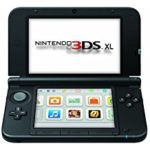 Next came the 3DS XL in 2012. The 3DS was a success, but some gamers (older like me perhaps?) felt the two screens were rather tiny and made any text or details on the screens difficult to see. The solution was the 3DS XL. At approximately the same form factor, the handheld now had much larger (both top and bottom) screens. Coming in at $200, it was a bit more than the 3DS, but was still less expensive than the launch price of the 3DS.
Next came the 3DS XL in 2012. The 3DS was a success, but some gamers (older like me perhaps?) felt the two screens were rather tiny and made any text or details on the screens difficult to see. The solution was the 3DS XL. At approximately the same form factor, the handheld now had much larger (both top and bottom) screens. Coming in at $200, it was a bit more than the 3DS, but was still less expensive than the launch price of the 3DS.
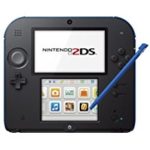 The Nintendo 2DS released in 2013. Designed to be the entry level handheld in the line, it came in at $130 (it is still available, but is now $80 – quite a steal.) However, the price drop required removal of the 3D capability. This was fine for most gamers, as few games really relied on the 3D features and it was commonly thought to just be a “gee whiz” factor and not a critical feature of the system. Removing the 3D effect also allowed them to drop any warnings about 3D effects on small children. The other change in the handheld was in changing the “clamshell” form into a rectangular tablet form. The response to the new form was mixed, with its lower price praised and its overall aesthetics panned.
The Nintendo 2DS released in 2013. Designed to be the entry level handheld in the line, it came in at $130 (it is still available, but is now $80 – quite a steal.) However, the price drop required removal of the 3D capability. This was fine for most gamers, as few games really relied on the 3D features and it was commonly thought to just be a “gee whiz” factor and not a critical feature of the system. Removing the 3D effect also allowed them to drop any warnings about 3D effects on small children. The other change in the handheld was in changing the “clamshell” form into a rectangular tablet form. The response to the new form was mixed, with its lower price praised and its overall aesthetics panned.
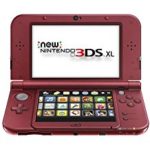 In 2015, with the Nintendo Amiibo craze going on (little figurines that store information – see almost any of Cary’s Nintendo articles… ) Nintendo decided to upgrade its 3DS line. Calling them the “New Nintendo 3DS” or “New Nintendo 3DS XL”, the new handhelds had faster processors, slightly larger screens than before, capability of interacting with Amiibo figurines, extra shoulder buttons, an extra little “pointing” stick just above the ABXY buttons.
In 2015, with the Nintendo Amiibo craze going on (little figurines that store information – see almost any of Cary’s Nintendo articles… ) Nintendo decided to upgrade its 3DS line. Calling them the “New Nintendo 3DS” or “New Nintendo 3DS XL”, the new handhelds had faster processors, slightly larger screens than before, capability of interacting with Amiibo figurines, extra shoulder buttons, an extra little “pointing” stick just above the ABXY buttons.
 Fast forward to the summer of 2017. The “New” Nintendo 3DS XL and Nintendo 2DS are still around (at $200 and $80 respectively), but the new kid on the block is the “New Nintendo 2DS XL” It is a 2DS version of the 3DS XL clamshell, but only costs $150. To make matters worse, the Nintendo 2DS (newly priced at $80) also comes with a free pack-in of Super Mario Bros 2.
Fast forward to the summer of 2017. The “New” Nintendo 3DS XL and Nintendo 2DS are still around (at $200 and $80 respectively), but the new kid on the block is the “New Nintendo 2DS XL” It is a 2DS version of the 3DS XL clamshell, but only costs $150. To make matters worse, the Nintendo 2DS (newly priced at $80) also comes with a free pack-in of Super Mario Bros 2.
Summary:
So, you’ve waded through the history of the 3DS system and you’re wondering what system you should get? Here’s a rundown of the three currently available systems.
$200 – New Nintendo 3DS XL
At $200, the 3DS XL is the top of the line. If you simply must have the (nifty but not necessary) 3D features, it is your only choice. (However, see nen switch
$150 – New Nintendo 2DS XL
This summer, you now have a second high-end option with the 2DS XL. It has the same processor, screen sizes, and capabilities of the 3DS XL, except for the 3D effect. (Technically the top screen has half the resolution of the 3DS but that isn’t very noticeable since there is a pixel for each eye on the 3DS.) Is a 3D display worth $50 to you? If not, the 2DS XL is your answer.
$80* – Nintendo 2DS
At almost half the price of a 2DS XL, the 2DS gives you access to the large library of 3DS games, for a much lower price. You are giving up a few things, however. The 2DS has a slower processor, comes as a tablet (not clamshell) design, and doesn’t interact with Amiibos (although you can get an extra attachment.) With access so so many good games, this is a great choice for mobile gaming under $100. (*Note that $80 includes Super Mario Bros 2 preinstalled)
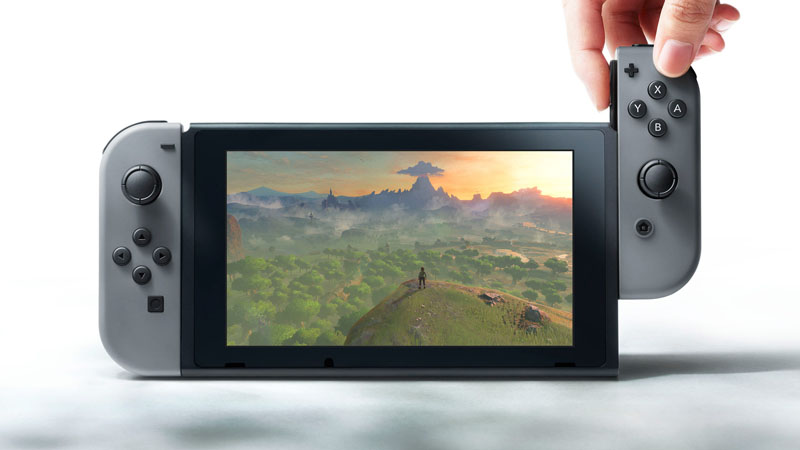
$300 – Nintendo Switch
Wait a minute, aren’t we talking about the 3DS line? Well, yes, but the elephant in the room remains the extremely popular (and portable) Nintendo Switch. For $100 more than a 3DS XL, the Nintendo Switch is a portable system with a HUGE screen, fast processor, and the ability to become a “console” by hooking it up to your TV. Its control buttons can even be removed to to play a two-player game on the spot (either on your TV or on the Switch’s screen itself.) It needs to be said, however, that the $300 price tag hides some extra costs. Some titles play up to 4 players or require a full pair of controls so to use that aspect of the Switch you have to pony up an additional $80 (more than 1/3 of the system price,) as much as a 2DS! A further hidden cost lies in the games themselves. High end Switch games run as much as $60 whereas 3DS titles typically fall around $30.
Final Verdict:
 For 3DS gaming, I am ironically recommending the 2DS. At only $80 (and with the new pack-in game worth $20 or more), it is a great price point. It is the least expensive way to play all of the immense library of 3DS games that are out there.
For 3DS gaming, I am ironically recommending the 2DS. At only $80 (and with the new pack-in game worth $20 or more), it is a great price point. It is the least expensive way to play all of the immense library of 3DS games that are out there.
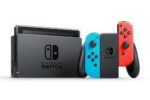 For those looking at higher price points, I have to recommend jumping all the way up to a $300 Nintendo Switch. There are only a few games available at the moment, but they are some of the most-talked about games of the year. Mario Kart 8 Deluxe is an excellent game, and Zelda: Breath of the Wild is the front runner by far to become the Game of the Year. By itself, it is a remarkable handheld, but its ability to also serve as a “console” seals the deal. Gamers who didn’t jump over to the Wii U will find the Switch an excellent replacement. One could consider the Switch as an inexpensive $100 handheld combined with an inexpensive $200 console all in one.
For those looking at higher price points, I have to recommend jumping all the way up to a $300 Nintendo Switch. There are only a few games available at the moment, but they are some of the most-talked about games of the year. Mario Kart 8 Deluxe is an excellent game, and Zelda: Breath of the Wild is the front runner by far to become the Game of the Year. By itself, it is a remarkable handheld, but its ability to also serve as a “console” seals the deal. Gamers who didn’t jump over to the Wii U will find the Switch an excellent replacement. One could consider the Switch as an inexpensive $100 handheld combined with an inexpensive $200 console all in one.





Discussion Area - Leave a Comment